
Schindler's List: The Beginning of an Unlikely Hero
Schindler’s List walk through
Part 1: Oskar Schindler Arrives in Kraków
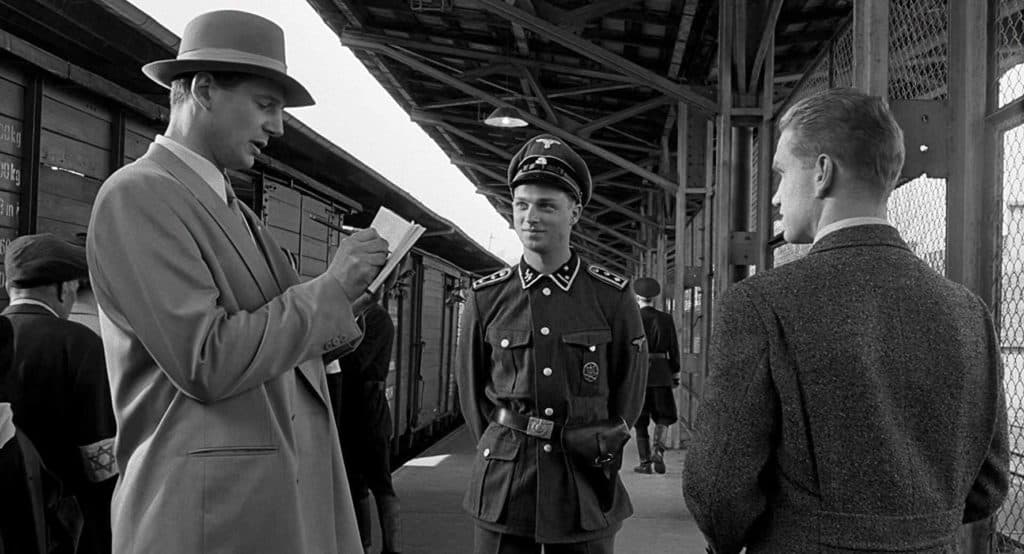
The story opens with Schindler rolling into German-occupied Kraków like a man who smells opportunity. He’s charismatic, expensive taste, smooth talker, zero moral compass at this point. All he cares about is profit and prestige.
He hits the fancy restaurants where Nazi officers hang out, buys them drinks, flashes money, hands out cigarettes like party favors. This guy is basically speed-running networking. And it works: he positions himself as “useful” to the regime, not politically, but economically.
Meanwhile, on the ground, Jewish families are being forced into cramped ghettos. Life is shrinking for them while Schindler’s is expanding.
Schindler then meets Itzhak Stern, a quiet, brilliant Jewish accountant. Stern realizes Schindler is greedy but not cruel, and he sees an angle: if he helps Schindler set up a factory staffed by Jewish workers, those workers get protected from deportations. Schindler doesn’t care about saving anyone yet. He just likes cheap labor.
But this alliance is the seed. The future of the story grows from this exact moment.
Part 2: Life Inside the Kraków Ghetto
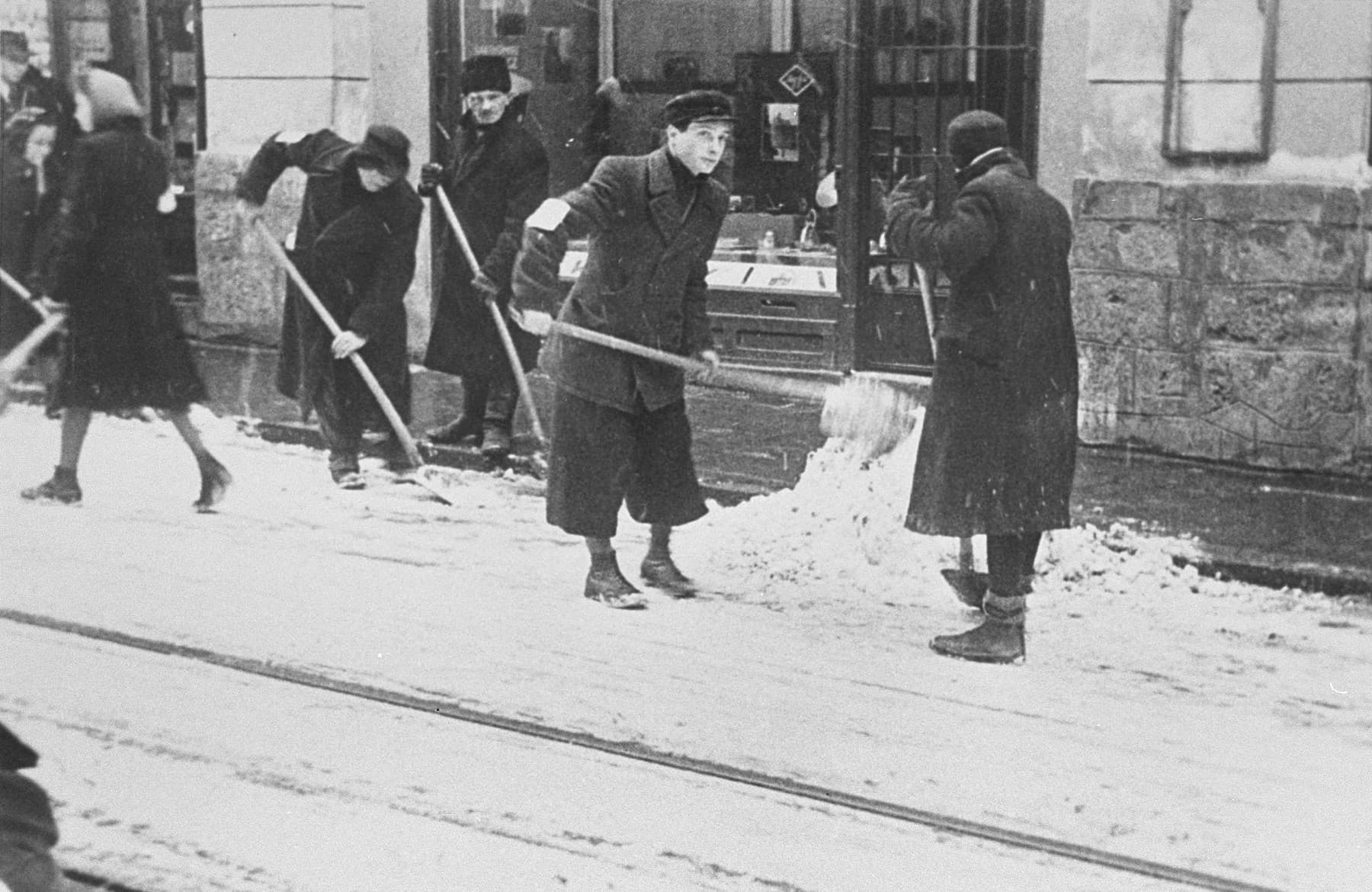
Once the ghetto is fully established, the contrast between Schindler’s world and the Jewish community becomes sharper and harsher. Inside those walls, life is suffocating. Families are shoved into single rooms, food is scarce, soldiers wander around with that unpredictable cruelty that keeps everyone afraid all the time. It feels like the whole place is holding its breath.
Schindler’s factory, though, becomes this weird pocket of safety. People work long hours, but compared to what waits outside, being on that worker list feels like surviving another day. Stern is the unsung engine here. He quietly slips in workers who are old, injured, or not technically “useful,” hiding them in the paperwork so they can avoid deportation. Schindler doesn’t notice at first, or maybe he just looks away.
Meanwhile, Schindler’s profits start climbing like crazy. He loves the image he’s built: successful businessman, respected by the German officers, always at the center of the room. But you can feel threads inside him start to pull. He sees little things: fear in people’s eyes, the way families cling to each other at the ghetto gates. He’s not changed yet, but something in him is paying attention.
And then the brutality ramps up with the arrival of Amon Goeth, the new commandant. If Schindler is charm and ego, Goeth is pure chaos: impulsive, violent, enjoying the power he has over life and death. His presence is like a dark cloud rolling over the city, and it signals that everything is about to get much worse.
Part 3: The Liquidation of the Ghetto
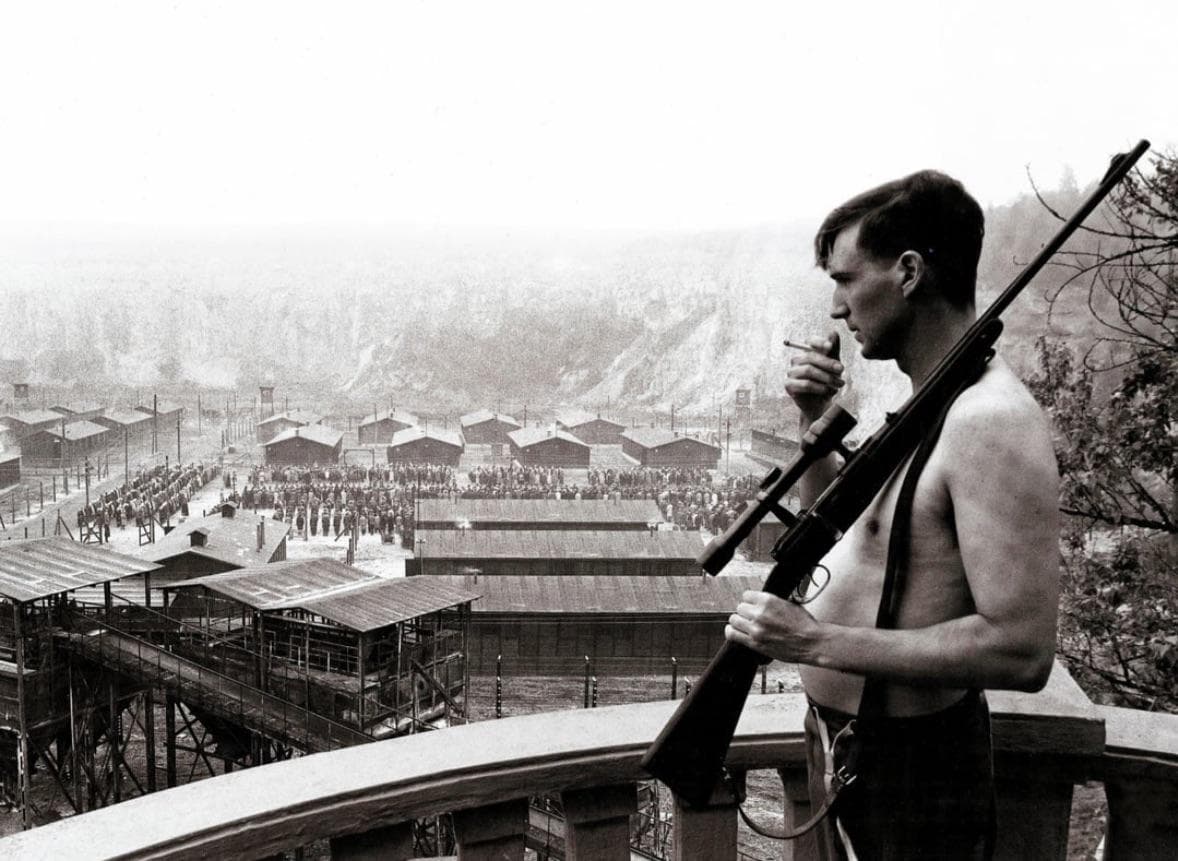
This is the part where everything snaps. Goeth takes full control, and his first major act is to “liquidate” the Kraków Ghetto. It stops being just a bad place and becomes a battlefield where people have no chance.
The liquidation unfolds with this awful mix of military precision and total chaos. Soldiers storm every building, dragging people out, shooting whoever can’t move fast enough, splitting families apart like it’s nothing. It’s loud and messy and terrifying.
Schindler watches from a hill, far enough to be safe but close enough that he can’t unsee any of it. This is the turning point for him. The shock on his face isn’t just horror; it’s recognition. He realizes exactly what the Nazi machine is doing, and for the first time, you see something shift inside him that isn’t about money or reputation.
Down in the streets, Goeth treats the massacre like entertainment. He’s roaming around with a sniper rifle, shooting people from his balcony in the days that follow, almost casually. It’s one of the ugliest human portraits in the whole story.
After the liquidation, the survivors are sent to the new Plaszów labor camp that Goeth runs. It’s supposed to be “orderly,” but it’s basically a nightmare with uniforms.
Schindler’s factory now becomes even more important. If you’re on his list, you avoid Plaszów’s worst cruelty. He starts realizing that he has the one thing Goeth respects: money. And money can keep people alive.
Part 4: Schindler and Goeth, the Devil’s Negotiation

Plaszów is now the center of everything: the fear, the violence, the daily uncertainty. Goeth rules it like a tyrant with no rules except his own moods. People survive by luck, timing, or being invisible.
Schindler steps deeper into this world, because his workers are inside this camp and he knows that if he doesn’t keep Goeth close, he can’t protect anyone. Their relationship is this weird, tense dance: Schindler charms, flatters, buys him drinks, pretends to be impressed. Goeth eats it up. He likes being admired, especially by someone who feels “important” and successful.
At the same time, Schindler sees more of the camp’s brutality than he ever wanted to. Random executions. Punishments that don’t make sense. People walking on eggshells every second. And Goeth’s chilling unpredictability, like he can be joking one moment and killing someone the next.
This is where Schindler starts using his privilege like a shield for others. Little deals. Quiet payments. Subtle nudges.
A worker gets beaten. Schindler intervenes. Someone is about to be sent away. Schindler steps in with money or paperwork. Stern keeps sneaking people into the factory list, and now Schindler actively supports it.
His factory becomes the safest place a Jewish worker can hope to be. He’s not fully the hero yet, but he’s intentionally bending the system. He’s testing the limits of how much good he can do without drawing too much attention.
The contrast between Schindler and Goeth becomes sharper with every scene. One cares more and more about people he used to ignore. The other grows more monstrous the more power he’s given. It’s like watching two opposite arcs unfold in the same space.
Part 5: The List Starts to Take Shape
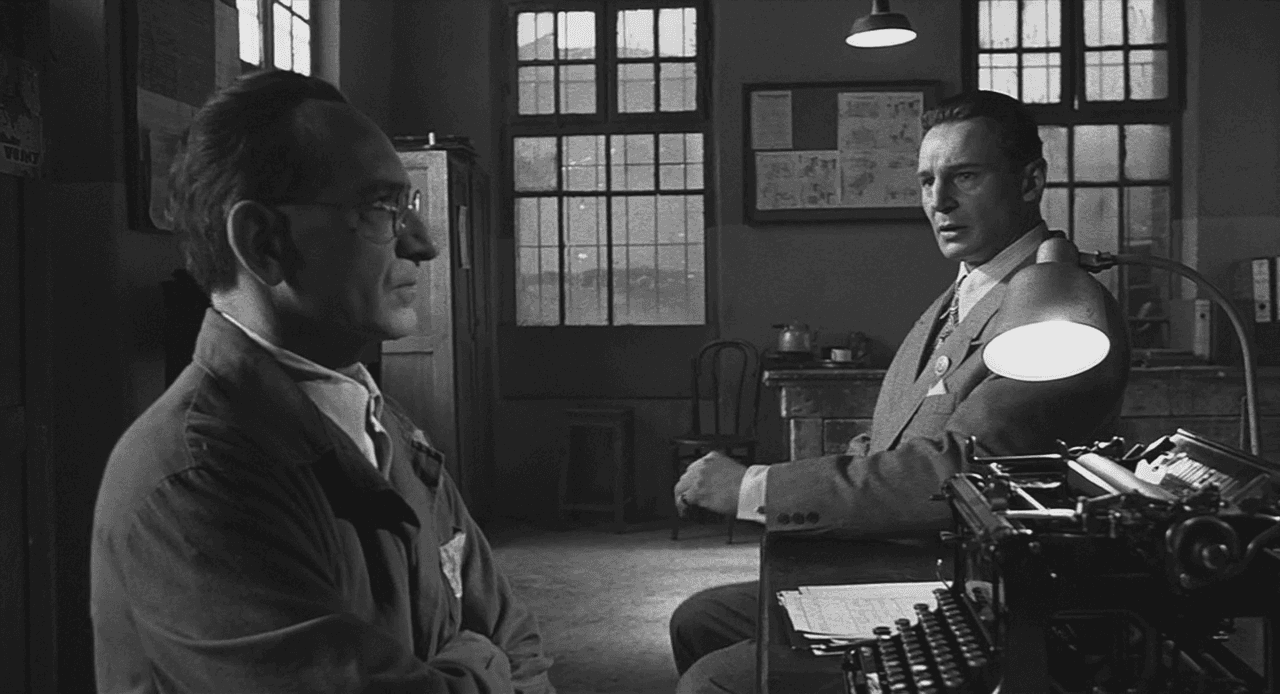
The war shifts. The Germans are losing ground, and suddenly all their operations get messy and panicked. Camps are being emptied, evidence is being destroyed, and Goeth is under pressure to “clean up” Plaszów. For everyone inside the camp, that usually means death.
Schindler realizes time is running out. Whatever help he can offer, it has to be now or never. That’s where the idea of the list really forms. Not just “workers” anymore. It becomes a lifeboat.

He works with Stern to create a roster of people who will be transferred to a new factory Schindler claims he’s building in Czechoslovakia. A munitions plant. Totally loyal to the German war effort on paper. But Schindler’s real plan is simple: get them far away from Goeth and the collapsing camp system.
The process feels almost surreal. Names typed, crossed out, changed, added. Every name is a life, and the stakes hang over the room like smoke. Stern knows it. Schindler knows it. They’re basically fighting death one keystroke at a time.
Goeth, meanwhile, is starting to feel the cracks in his world. The power he enjoyed is slipping, and he lashes out more. Schindler leans in harder, bribing him, calming him, massaging his ego to get permission for the transfer.
This whole part of the story has this quiet intensity: people don’t know if their names will make it onto the list. Some wait in fear. Some beg. Some accept whatever comes. And Schindler, who used to pick workers based on profit, now fights to save the old, the young, the weak, the ones who can’t “work” at all.
It’s the moment he flips fully from opportunist to protector.
And the list keeps growing.
Part 6: The Transport and the Terrifying Detour
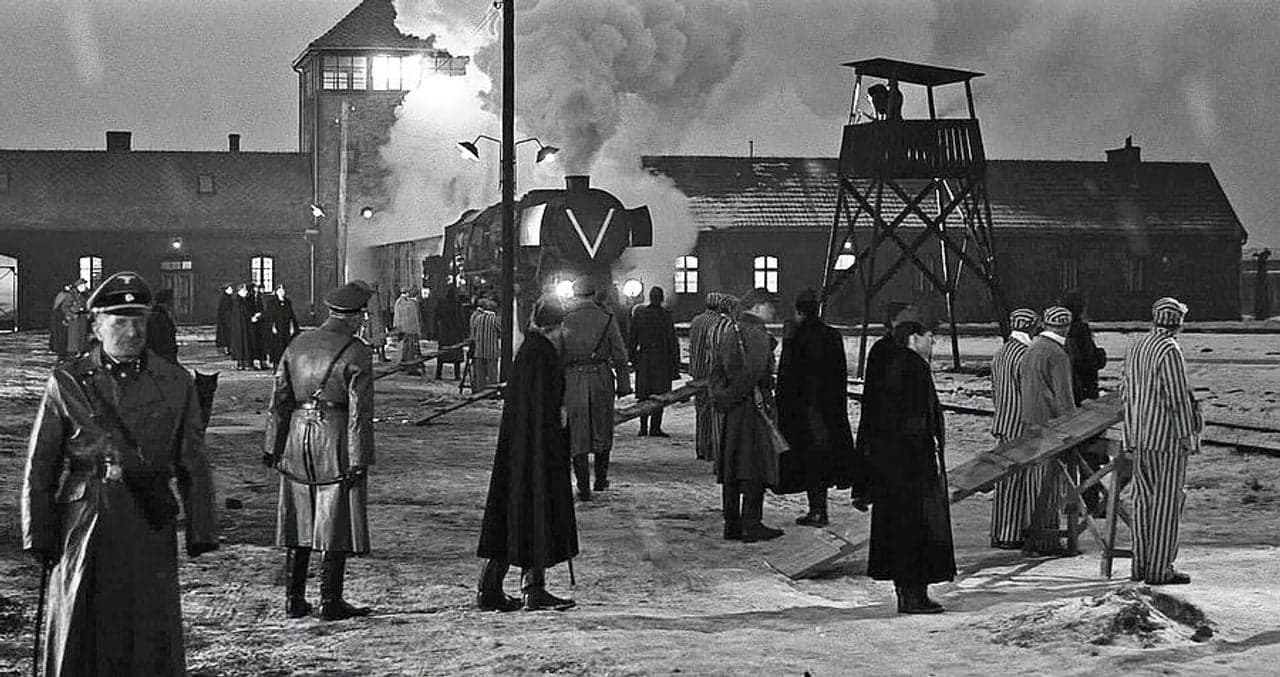
The list is finished. Or as “finished” as something like this can be. Hundreds of names, all hand-picked to escape the machinery of death. Schindler has the approvals, the signatures, the bribes paid. On paper, everything is set.
The men are loaded onto one train, and it goes where it’s supposed to. Stressful, but smooth enough.

The women and children, though… their train gets rerouted. Not to Schindler’s factory. To Auschwitz.
It’s one of the most heart-stopping turns in the whole story. They arrive thinking something is wrong, but they don’t yet understand the full meaning of where they are. The soldiers strip them, shave them, push them through the intake process with cold efficiency. It’s a machine built to erase people.
Schindler finds out what happened and absolutely loses it. This is one of the rare moments where he drops the charm and shows raw fear. He knows exactly what Auschwitz is. He knows minutes matter.
 He rushes there, not as a hero charging in, but as a man desperate not to lose the people he promised to save. He goes into full negotiation mode with the camp officials. More bribes. More vodka. More deals. He acts like he’s the one being inconvenienced, like these women are vital to his imaginary weapons factory.
He rushes there, not as a hero charging in, but as a man desperate not to lose the people he promised to save. He goes into full negotiation mode with the camp officials. More bribes. More vodka. More deals. He acts like he’s the one being inconvenienced, like these women are vital to his imaginary weapons factory.It works, barely. He manages to pull them out before the camp swallows them for good. Watching them return to safety is both a victory and a reminder of how fragile the whole operation is. One wrong signature, one soldier in a bad mood, and everything collapses.
Once all the workers finally reach the new factory in Brněnec, you feel this strange mix of relief and dread. They escaped one hell, but the war isn’t over, and Schindler’s plan still isn’t fully revealed.
Part 7: The Factory That Makes Nothing

The workers arrive at the new factory in Brněnec, and right away, the vibe is completely different from every place before. No random killings. No Goeth watching them like prey. No guards threatening them just for existing. It’s still wartime, still dangerous, but the air isn’t poisoned with fear every second.
And Schindler? He leans all the way into his new role. He’s not pretending anymore. He wants these people to survive, period.
The factory is supposed to be a munitions plant making artillery shells for the German war effort. Except Schindler makes a very intentional choice: the factory will produce absolutely nothing usable. They run machines, they do the motions, but the shells are duds. Bad metal, wrong dimensions, intentionally defective.
It’s like a quiet, brilliant act of sabotage wrapped inside a humanitarian mission.
He’s burning through his fortune bribing soldiers, paying suppliers, keeping authorities off his back, and making sure his workers are fed and warm. He goes bankrupt saving people, which is the most poetic flip from the man we met at the start.
The workers sense the shift too. They feel protected for the first time. Stern keeps the place organized. Families find tiny bits of normalcy. Kids play. There’s hunger, but not the terror they came from.
What hits hardest here is watching Schindler go from “I want money” to “I want them to live, and I’ll lose everything for that.”
While all this is happening, the war grinds toward its end. The Germans are getting desperate. Rumors spread. Troops retreat. The world is tilting.
And Schindler knows that once the collapse fully hits, the people in his factory could become targets again. One more decision is coming.
Part 8: The War Ends and Schindler’s Goodbye
The factory keeps running its quiet rebellion until the very last days of the war. News trickles in that Germany is collapsing. Commanders are vanishing. Orders are getting weird and frantic. Everyone can feel the tension: freedom is close, but danger is too.
Schindler knows the moment the Reich officially falls, the SS might choose to “clean up” the camp by killing everyone inside. So he makes one final move.
He gathers all the guards in the factory. Instead of threats or bribes, he gives them a speech. He tells them the war is over. The crimes they committed will follow them forever. But they have one last chance to walk away without killing anyone else. He doesn’t shout. He doesn’t threaten. He just asks them to leave peacefully.
And unbelievably, they do. They drop their guns and walk out. It’s one of the most quietly powerful moments in the story: the violence just… stops.
Then Schindler has to face the truth. He’s a member of the Nazi Party. A factory owner who technically employed forced labor. If the Allies catch him here, he’ll be arrested immediately, and probably executed before anyone can explain what he actually did. So in the middle of the night, he prepares to flee with his wife.

Before he leaves, the workers gather around him. They give him a letter explaining everything he did to save them, signed by all of them, hoping it will protect him if he’s captured. They also give him a ring made from the gold tooth of one of the workers, engraved with that line: “Whoever saves one life saves the world entire.”
This is where Schindler, the man who always kept his cool, finally breaks. He starts crying, apologizing, saying he should’ve saved more. He points to the car, the jacket, the pin on his lapel, saying each thing could’ve bought one more life. It’s a brutal, human moment. He sees all the weight at once.
The workers tell him he saved generations. He still feels like it wasn’t enough.
He leaves in the dark. They stay behind and wait for morning.
When dawn hits, the Soviet army arrives. The gates open. The workers walk out, alive, because they made it onto that list.
Years later, the real survivors visit Schindler’s grave and place stones on it. Not as a symbol of grief, but as a promise: we lived. You saved us. You’re remembered.
Epilogue — What the Story Leaves Behind
When the dust of the war settles, the story doesn’t fade out so much as it transforms. Schindler, once a charming opportunist, dies years later mostly unknown and broke. But the people he saved carry his legacy like a living monument.
The film ends by showing the real survivors, arm in arm with the actors who portrayed them, walking to Schindler’s actual grave in Jerusalem. It’s quiet, simple, and heavier than any dramatic speech. Each survivor places a stone on the tomb, a Jewish tradition that means: I was here. I remember you. Your life touched mine.
Then we see their descendants. Kids. Families. Generations. A ripple effect that started from one man deciding to pull people out of a system built to erase them.
That’s the closing rhythm of the story: A man who failed at business, fell into trouble, lost everything, but saved more than a thousand lives. A reminder that heroism doesn’t start perfect. It starts with a moment when someone decides to care and refuses to stop.
And the title hits different now. It’s not just “Schindler’s List.” It’s a list of futures.
